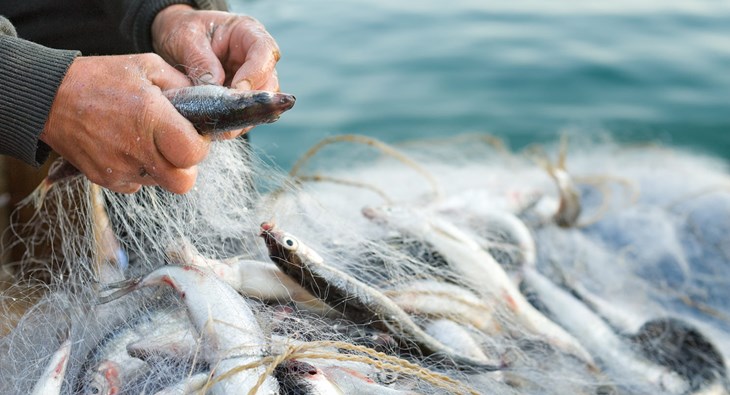Fish are the most utilised animals on Earth. Up to three trillion individuals are killed for food every year. They are able to feel pain, pleasure and other emotions throughout their lives. Despite this, fish receive very little legal protection and are either farmed in terrible conditions or caught using extremely cruel methods.
Fish are aquatic vertebrates that live in the sea and fresh water. Most fish have highly developed senses with excellent taste, smell and colour vision. They also have a ‘lateral line system’ of receptors that can detect the motion of currents, nearby fish and prey.
They are sentient animals: capable of feeling pain, and experiencing a range of emotions. Scientific evidence has revealed that fish are far more intelligent than people assume. They have long-term memories, complex social structures, problem solving abilities, and some have been seen using tools.
Fish are eaten by people around the world and are either caught from the wild or farmed, which is known as aquaculture.
Fish farming today

Some scientists have predicted that by 2048, stocks of all species of sea fish will have collapsed, largely due to over-fishing. Meanwhile, aquaculture is growing rapidly. In 1970 around 5 per cent of the fish we ate came from farms. Today, around half of the fish we eat has been farmed. Globally, between 40-120 billion farmed fish are slaughtered for food each year.
Farmed fish are reared in large numbers in crowded enclosures. These may be situated on land or in rivers, lakes or at sea. The vast majority of Atlantic salmon and rainbow trout consumed around the world are farmed intensively. Other species commonly farmed include carp, catfish, sea bass, and tilapia.
When fish become fish feed

Although aquaculture may seem like a solution to the problem of over-fishing wild stocks, it can actually add to the issue. As many of the species farmed are carnivorous, they are fed largely on wild-caught fish. Over 450 billion fish are caught each year for reduction to fish oil and fishmeal, which is then fed to farmed fish.
This means even greater numbers of fish are taken from the oceans and rivers for use as feed, than if they were eaten by humans directly. This is very unsustainable.
For example, to produce one tonne of farmed salmon it takes about two and a half tonnes of wild-caught fish, such as anchovies. Due to the small size of anchovies, this can mean that 500 individuals must be caught and killed for fish oil, just to produce one salmon.
There are also serious welfare concerns about how wild fish are caught and slaughtered. To find out more about the welfare of wild fish visit www.fishcount.org.uk and for information on sustainable fishing see www.msc.org.
You can read more about the welfare of farmed fish here.


